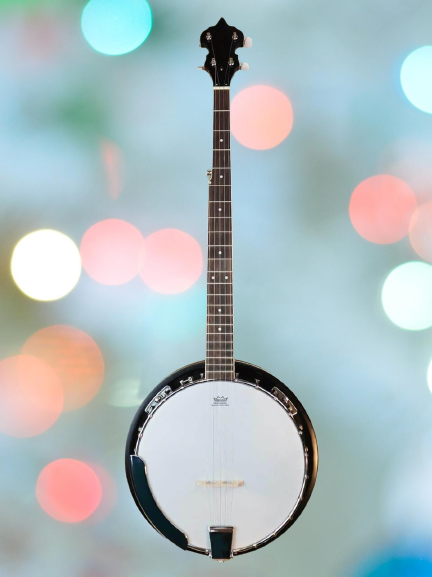Whether you are a beginner or an experienced player, an irish banjo can be an extremely useful instrument. It comes in a variety of sizes and strings, and it can also be played in several different styles. You can also find some information on the history of the banjo in this article.
Tenor banjo
Originally used in traditional Irish music, the Irish tenor banjo is also a staple in many Irish bands today. It is similar to the octave fiddle and can be played in a number of different ways. Some players use a vibrator while others use an open-back banjo.
Resonator tenor banjos have a higher power than open-back models. They also have a warmer tone. They are preferred by Jazz players. They allow a player the ability to cut through other instruments.
Open-back tenor banjos sound more natural and blend in with the rest of the band. They are also popular with Irish players. While some banjos can be tuned to a particular tuning, most are tuned in CGDA. This is a standard tuning for Irish tenor banjos.
Five-string banjo
The five-string banjo was brought to Ireland by blackface minstrelsy. It was also popular with itinerant entertainers and street performers. It was also very popular on the stages of England’s music halls. The popularity of the banjo soared during the great folk revival in the late 1700s and the early 1800s.
There are many types of five-string banjo. There are three types of five-string banjos: a plectrum banjo (open back), or a clawhammer banjo. All are used in different ways. The type of music that you like will determine which type is best for you.
For instance, the plectrum banjo uses a longer scale, while the clawhammer banjo uses a smaller scale. Regardless of your choice, you’ll need to learn the proper technique to play it properly.
The finger-picking style is also popular on the 5-string banjo. This style is not necessarily opposed to the traditional Irish music culture. This style requires more dexterity on your fingers.
Chanterelle on the banjo
The banjo, despite its folk status, is not twangy. It vibrates energy and resilience, instead of being twangy. Its music can reflect pride, comedy, and anticipation. It is an important instrument in bluegrass groups.
The banjo has come a long way in the past 100 years. It has conquered Bluegrass and Country musics as well as Old Time musics. The banjo is also used in jazz ensembles. And, as of recent years, it is making a strong comeback.
The earliest known banjo is a Calabash gourd, though the instrument was likely made of animal skin. Its strings were made from cat gut and reached a high note.
The earliest illustrations of a banjo from the 17th century show a banjo with a short string, although no one claims to have invented it. The earliest reference to the banjo is in a 17th century Jamaican songbook, though the peg for the short string is not there.
If youre looking to buy irish banjo, you must check out all authetic irish manufacturers before making your purchase
Modern Irish songs in English and Irish
You can find Irish music that will get your feet tapping, or a quiet and heartfelt song. There are a few modern Irish songs here in English and Irish that are sure to be a hit. The best part is, Irish music doesn’t necessarily have to come from Ireland. It can be hard-rocking, celebratory or tear-jerking.
One of the most recognizable Irish songs is “The Fields of Athenry,” which tells the story of a man who steals food for his family. It’s a sad story but one that’s still sung at funerals. The melody is catchy, and the lyrics are evocative.
“Molly Malone” is a classic Irish song, and it’s also the unofficial anthem of Dublin. It’s been played by many artists over the years, including The Dubliners. The statue of Molly Malone is located in Dublin, and her popularity has led to the creation of a day to honor her.
Origins of the irish banjo
There have been many variations of the banjo over the four hundred year history. These changes have impacted its use in various musical genres and borders. Today, the banjo is considered an integral part of the folk band.
Banjos in Ireland began as a string band instrument that was used for playing fiddle songs. It was also used in dance bands. Irish musicians started to adapt the instrument’s usage to play traditional tunes in the early 1900s.
The first banjos were made from a gourd body. These instruments were also tuned with pegs similar to those found on a violin. The strings were made from tough fibrous materials. Eventually, steel strings were added to the banjo.
Irish tenor banjo players play the instrument in a guitar-like manner. The instrument can be played in unison and with other melody instruments like the flute or concertina.

